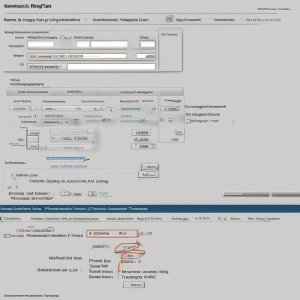Table of Contents:
Cost Average Trading is one of the most popular trading strategies used by investors to minimize their risk and maximize their potential return. This strategy involves gradually buying securities at different times and at different prices to reduce the average purchase price. However, there are several variations of Cost Average Trading that can be adjusted in different ways to suit an investor's individual needs and goals.
Value-Averaging
One variation of Cost Average Trading is Value-Averaging. With this strategy, the investor adjusts their purchases based on the value of their portfolio, rather than investing a fixed sum. The goal is to achieve the highest possible return by investing more when the market is performing well and less when the market is weaker.
Constant-Dollar-Plan
Another variation of Cost Average Trading is the Constant-Dollar-Plan. With this strategy, the investor regularly invests a fixed amount of money into a security, regardless of its price. This way, they buy more shares when the price is low and fewer shares when the price is high. The goal is to achieve a good price-to-performance ratio and minimize risk.
Comparison of Cost Average Trading Strategies
| Cost Average Trading Strategies | Pros | Cons |
|---|---|---|
| Dollar Cost Averaging (DCA) | Simple to execute, helps mitigate market volatility risk | May miss out on profits when market is on consistent upswing |
| Value Averaging (VA) | Could achieve better returns in fluctuating market condition | Requires active management, may need larger initial investment |
| Constant Dollar Plan (CDP) | Suited for long term investments, less active management required | Doesn't take into account market trends, could result in lower returns if market performs well |
| Random Investment Strategy (RIS) | Doesn't require market knowledge, hard to make large mistakes | Entirely dependent on luck, could result in poor returns |
Constant-Share-Plan

Another variation of Cost Average Trading is the Constant-Share-Plan. With this strategy, the investor regularly buys a fixed number of shares, regardless of the price. This way, they buy more shares when the price is low and fewer shares when the price is high. The goal is to build a stable position and minimize risk.
Momentum-Investing
Another variation of Cost Average Trading is Momentum-Investing. With this strategy, the investor doesn't buy when prices are falling, but rather invests in rising prices. The aim is to achieve good performance by investing in securities that have had a positive price performance in the recent past. The goal is to profit from a self-reinforcing upward trend and minimize risk.
Pyramiding

Another strategy that is based on similar principles to Cost Average Trading is Pyramiding. With this strategy, the investor gradually builds a position by buying more shares as prices rise. The goal is to maximize profits by adding more shares as prices move in the desired direction.
Contrarian Investing
Another strategy is Contrarian Investing. This strategy involves buying securities that go against the general market trend. The idea is that the market often overreacts, and securities that fall are often undervalued and therefore a good long-term investment opportunity.
Position Trading

Another strategy that is based on similar principles to Cost Average Trading is Position Trading. With this strategy, positions are held for a longer period, often several months or even years. The goal is to profit from long-term market trends by holding positions that align with these trends.
Swing Trading
Another strategy is Swing Trading. This strategy involves buying and selling securities within days or weeks to profit from short-term market fluctuations. The focus is on finding short-term trading opportunities rather than long-term investments.
It's important to note that each of these strategies has its own advantages and disadvantages, and the choice of the right strategy depends on various factors, such as an investor's individual goals, risk tolerance, and available time and resources.
Another important consideration when choosing a trading strategy is regularly reviewing and adjusting the strategy. Cryptocurrency markets are known to be volatile and can change quickly. It's important to monitor market developments and make adjustments if necessary to react to changes.
Overall, Cost Average Trading and its various variations provide a way for investors to diversify their portfolio and minimize risk while maximizing their potential return. However, the choice of the right strategy depends on various factors, including an investor's individual needs and goals. It's important to do thorough research and choose a strategy that suits your needs and goals.
Frequently Asked Questions - Different Cost Average Trading Strategies
What are different cost average trading strategies?
Cost Average Trading Strategies are investment approaches to buy or sell securities at a different cost average. Key strategies can include Dollar Cost Averaging (DCA), Value Averaging (VA) and Share Averaging (SA).
How does Dollar Cost Averaging work?
In DCA, one would invest a fixed dollar amount into a particular investment regularly, irrespective of the share price. When prices are low, more shares are bought. When prices are high, fewer shares are bought.
What is Value Averaging?
In Value Averaging, an investor decides how much they want the value of their investment to grow each period. If the portfolio underperforms, they invest more. If it overperforms, they invest less or sell.
What is Share Averaging Strategy?
Share Averaging involves acquiring a fixed quantity of shares per investment period, regardless of the share price. This can lead to higher investment when prices are high and lower investment when prices are low.
What are the pros and cons of cost average trading strategies?
The benefits include lower risk due to market fluctuations, disciplined saving, preventing rash decisions based on market trends. Downsides can be missing out on buying low during market dips, higher transaction fees due to more frequent trading, and potential underperformance if the market consistently rises.












